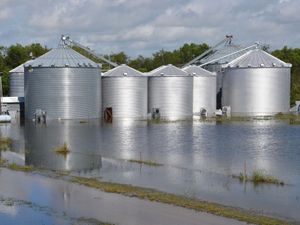Consider 2025 Crop Insurance Deferral Strategies
 Farmers may be eligible to defer recognition of crop insurance payments received in 2025 to the following tax year, depending on specific IRS criteria. To qualify, a farmer must use the cash method of accounting, receive insurance payments in the same year as crop damage, and typically recognize related income in the following year. Here are three examples:
Farmers may be eligible to defer recognition of crop insurance payments received in 2025 to the following tax year, depending on specific IRS criteria. To qualify, a farmer must use the cash method of accounting, receive insurance payments in the same year as crop damage, and typically recognize related income in the following year. Here are three examples:
In Example 1 (full examples can be seen in the link below), a farmer received $18,500 in a prevented planting indemnity due to wet weather conditions. Under IRS rules, such payments can be deferred if caused by natural disasters. However, deferral is only allowed if the farmer has a history of selling the crop as grain corn. If the farmer uses the corn solely for silage, deferral isn’t permitted.
In Example 2, a farmer received $25,000 in crop insurance payments. There was $14,000 for prevented planting of soybeans and $11,000 in disaster payments for damage to corn. Although the payments came from different programs, they must be treated as a single unit. Since both crops are part of the same business, the farmer must defer both or neither.
In Example 3, a farmer received an $8,000 payment in 2025 under a Pasture, Rangeland, Forage (PRF) insurance policy. The payment was triggered by low rainfall levels, according to a rainfall index. According to the IRS in its updated Publication 225, weather-based insurance proceeds not tied to actual crop damage are not eligible for income deferral.
While deferring certain crop insurance payments may be allowed under IRS rules, such decisions should be evaluated in the context of a broader tax strategy.
Read more about 2025 crop insurance deferral strategies here.
Note: This article does not constitute tax advice. Seek counsel from a tax expert before making any decisions.
